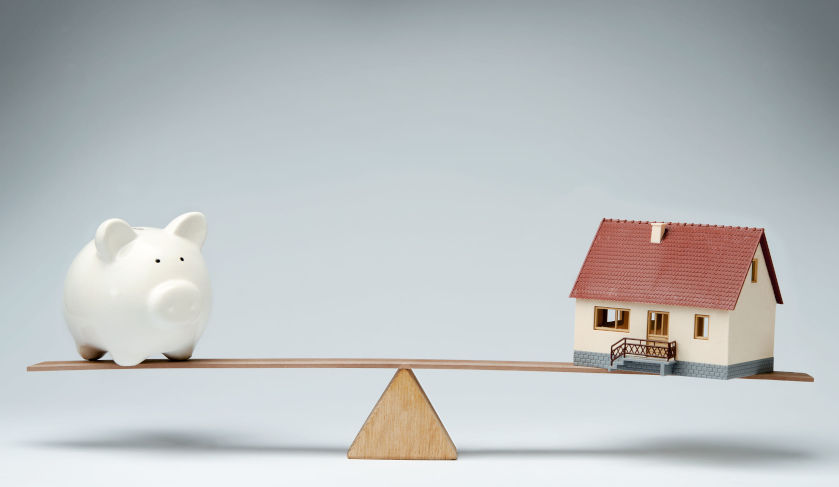Should you shift from an interest-only loan to a fixed interest rate loan?
After building a 17-property portfolio, Smart Property Investment’s Phil Tarrant and his financial team reviewed his mortgages and considered making changes to get a better interest rate and increase cash flow. One of the options they came up with was to move from interest-only loans to fixed rate loans.

Three of Phil’s 19 loans are with one lender. His highest interest rate with the said lender is 5.74 per cent while the lowest is 4.9 per cent. By shifting those three loans into a fixed position at 4.4 per cent, they can save $7,500 annually over a three-year period or $22,000 in total.
Pros and cons
The Australian Prudential Regulation Authority (APRA) has implemented changes on investment lending in order to slow down the rampant price increase in several Australian property markets. Due to these changes, lenders haven’t been as aggressive in repricing existing loans, especially interest-rate loans.
According to mortgage broker Ross LeQuesne, fixed interest rate loans currently offer the most competitive rates in the market, which means Phil can potentially save more money by shifting his loans to a fixed position. However, as enticing as it sounds, this strategy also has some red flags.
Before implementing this, consider your overall investment strategy—are you planning to access the equity of the property in the future? Are you planning to renovate or add a granny flat? Are you looking to sell it? Do you have other plans within the duration of the fixed term?
All the major decisions stated above may not be made possible when you decide to use a fixed interest rate loan for financing.
According to Ross: “[You may not be able to] access finance under the new lending guidelines with that particular lender. You may want to … open up your options so you don't get hit with what they call a fixed rate break cost.”
Consider sitting down with your mortgage broker and the rest of your financial team to weigh all your options and make the best decision based on your own financial situation and borrowing capacity.
Phil said: “If you're not going to do anything, it's okay to fix because you're not going to need access to the cash. But if you choose to be proactive in portfolio development and you need to drill down equity in terms of buying new property or building granny flats, it might not be the right solution ... for you.”
Break costs
Another thing to consider if you plan to shift from interest-only loans to fixed interest rate loans is the fixed rate break cost. The break cost is the fee that the investor needs to pay the lender if he decides to refinance to a different product, make extra repayments, or repay the full amount before the term ends.
Ross explained: “The break ... depends on what the cost to the lender is going to be. If they could lend the same money that they've lent out to somebody else and get a higher interest rate from it, then the break cost is not going to be very much.”
“But if it's in reverse, where rates are considerably lower than the rate that you have locked in at the time when you're looking to break, then the fixed rate break cost will be higher because there's no way they can lend out to somebody else that money.
“That's the risk that you've taken in terms of choosing to fix so you're the one that's liable for that cost—that's where the break cost comes in,” the mortgage broker added.
Risk management
According to Phil, choosing the right lending option is a complicated task because of the unpredictability of the property markets.
He said: “You don't know what you don't know. You don't know what the market's going to do, you can't control the market. You might be able to control what you choose to do with your property or property portfolio in two [to] three years' time but you can be restricted if you do [fixed rate].”
However, Ross believes that a good review of the mortgages and the whole portfolio can help any property investor make the right decision. While it’s quite impossible to know how the markets will move in the future, but you know the numbers that make your portfolio—from cash flow to holding costs.
The mortgage broker said: “For [Phil who has] refinanced a number of times—if we take out that land tax cost, which is about $30,000, after you do these negotiations, you're looking at about $7,000 cost to hold a portfolio.
“Divide that [on] a weekly basis to hold 17 properties, it's $150 bucks a week. Not a bad thing. They're the things you do know … That's what you need to focus on as [an investor].
“For example … you're getting a 6 per cent to 7 per cent yield. If you just purchased that property to lock that in at 4.5 per cent, you're locking in the cash flow of that property. You've given yourself certainty for a three-year period … [about] what your cash flow is going to be,” he added.
At the end of the day, you have to study all available options and consider how each one will affect your long-term strategy. Ross and Phil also encourage diversification of lending products.
According to Ross: “We're not looking at fixing all of [Phil’s] loans because if all of [his] loans are expiring at ... one time [and] … say, if rates have jumped to 6 per cent, that would be a big cash flow hit on the portfolio all [at] one time.”
Tune in to Phil Tarrant’s portfolio update on The Smart Property Investment Show to find out how you can stay ahead of the game when attempting to get a loan from banks and lenders for a property and how the future plans for your investment can impact the loan you require.

